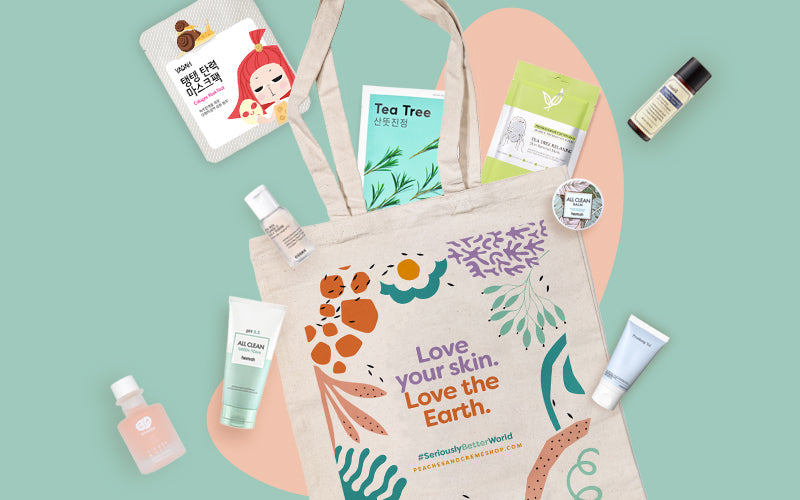Purging vs. Reactive Breakouts: How to tell the difference
Have you ever been excited to start a new skincare product that you felt may improve your skin, only to find your skin flaring up with spots and pimples? Now you're thinking: your skin got worse from before you started!
Is your skin rejecting the product? Or is it evidence that the new product is working?
You might be dealing with the process called “skin purging”. But how can you tell whether it is indeed purging, or if it's a this-product-is-screwing-up-my-skin breakout?
When you introduce new products into your routine, both are possible to occur. But they're fundamentally different: If your skin is purging, the good news is it’s temporary - the side effects are shorter than your standard breakout, and it’s ultimately a sign that the products you just introduced to your face are working. In this case, it's beneficial to continue with the product until you come out of the other side to see results. Purging is completely different from a bad reaction, when your skin is straight-up irritated or allergic to something in the product - and no amount of time will change that.
What is skin purging?
Skin purging refers to the skin's reaction to a specific active ingredient in a skincare product that promotes and speeds up skin turnover to polish away the top dead layer of skin, revealing the fresh, younger-looking skin beneath. (Increasing the cell turnover helps shed dead skin cells more effectively in the long-run so that they don’t build up and clog the pores.) However, in the process, they cause our skin to exfoliate and bring congestion to the surface. This brings all the build-up of pre-existing baby acne under the surface of your skin (or microcomedones) develop faster until they surface or erupt.
Purging commonly occurs as reaction when using chemical exfoliants such as AHAs, BHAs, PHAs, and retinoids. There are also times that using a facial scrub or a new facial brush may encourage extra exfoliation, causing purging.
How can I tell if it’s purging or a reaction?
If you are using a product with an active ingredient like AHAs such as lactic acid, glycolic acid, BHA or salicylic acid, or acne-treatment medications like retinols and adapalene, then what you’re likely experiencing purging.
However, if your new product does not contain any active ingredient that can speed up the skin turnover and exfoliate your skin (like a cleanser or moisturiser), then you’re most likely having a reactive breakout from your new skincare product.
Purging appears on the skin mostly as blackheads or small skin-coloured bumps just under the surface of the skin. It happens in areas where you usually get breakouts. The difference is that the turnover of a pimple from a skin purge tend to be faster than normal (the normal skin turnover cycle is about 1 month).
Reactive breakouts tend to appear in new areas and take a number of different forms, including blackheads (also known as comedones), red pimples on the surface of the skin (which dermatologists refer to as papules), pustules, nodules and cysts, which are deep, tender bumps underneath the skin. A reactive breakout may last from four to six weeks.
So now, say you want to use a new skincare product which you feel can improve your skin. The important question:
Is there anything I can do to avoid or prevent skin purging?
Unfortunately, no. There’s not much you can do than to protect your skin while waiting it out. But to make the effects of a purge less irritating, treat your skin the same way as if in a regular breakout: keep your pillow case clean, resist the urge to pick or pop any inflammation, and because most purge-causing ingredients lead to skin sensitivity in the sun, limit exposure and wear protection when you’re outside.
It sucks while you go through with it, but it is all worth it once you get to the other side of it. Purging is actually a good sign that your skincare is effective.
See the end of this article for our recommendations for quick skin recovery. These products have calming ingredients to soothe the skin while it’s undergoing purging.
To ease into the new products gently, what you can do is to introduce the products into your routine slowly and give your skin some time to adjust. For example, if you want to use a toner with Glycolic Acid (an AHA), you might want to start using this once a week for the first week, then increase the usage to 2-3 times a week, until your skin gets accustomed to it. Always be observant about how your skin is responding. Doing it gradually will reduce the possibility of your skin getting overwhelmed and freaking out because of the new ingredient.
But if you've determined that you are experiencing a reactive breakout and not skin purging, it is time to stop using the product and find one that works better for your skin instead. And if things continue to get worse after a few weeks, especially if you are undergoing acne treatment medication, it is always best to consult a dermatologist to ensure that the treatment is still appropriate for your skin.
Breakout Relief Skincare Essentials









Leave a comment